The Dig Marine Habitat Tour with Dave Wert
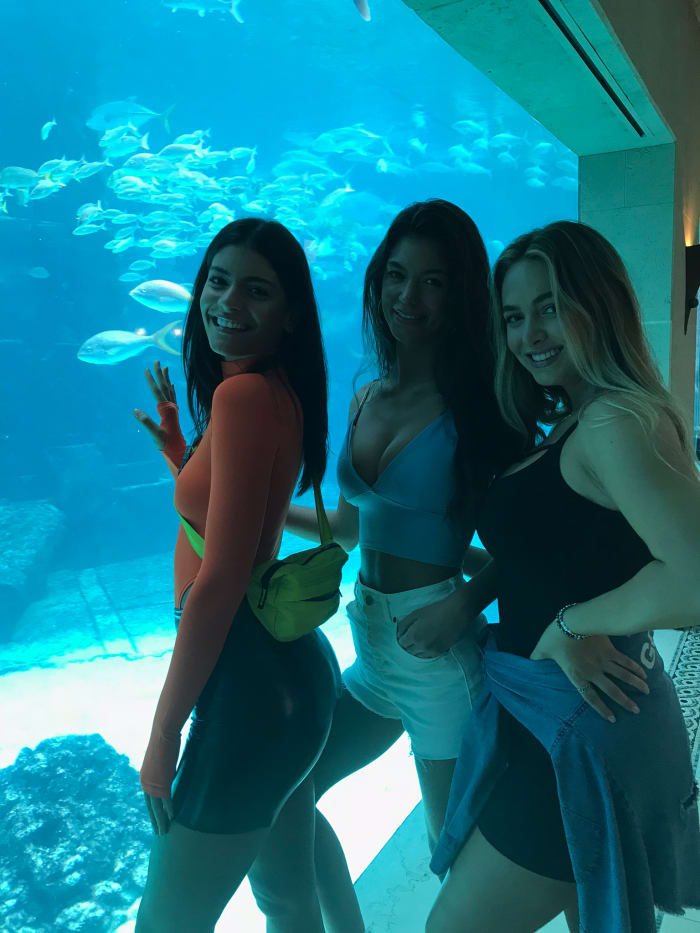
Kelsey Hendrix
SEE MORE: NASSAU, THE BAHAMAS | THE COVE ATLANTIS | DOLPHIN CAY
There’s only one place in the world where you can embark on a journey through the streets and tunnels of the fabulous lost city of Atlantis by way of stunning life exhibits! Reflecting the tunnels and thoroughfares of the lost continent, The Dig at Atlantis Paradise Island is located in the lower level of The Royal, beneath the lobby.
It houses 11 million gallons of water and features over 100 venomous Indo-Pacific Ocean Lionfish, 500 piranhas, iridescent jellyfish, and six-foot Moray Eels. Special environments hold nine species of enormous groupers, while smaller separate “Jewel Habitats” are home to multitudes of brilliantly-colored tropical fish.
There’s also an interactive touch tank aquarium, as part of The Dig experience. Filled with conch, starfish, seaurchins, sea cucumbers, crabs and horseshoe crabs, the tank is designed to encourage interaction between vacationers of all ages and marine life of all kinds.
We caught up with The Dig to learn more about the work they do with these incredible creatures!
FAQS
Everything you need to know before a trip to The Dig at Atlantis.
How was The Dig, a marine habitat, started?
The Dig at Atlantis is a marine habitat and aquarium that was created and opened for Atlantis’ Second Phase in 1998. From the beginning, we have been a dedicated research/education destination for guests of all ages – we are lovers of the ocean and its inhabitants. Dave Wert, Aquarium Director at Atlantis and marine biologist by trade, was brought on to help with the planning and startup of the Aquariums before the facility opened.
What is some of the work the team does with the animals?
We have an incredible team of marine biologists and aquarists who take care of these animals (over 165+ dedicated Marine Team members).
We are only one of two aquariums in the western hemisphere that exhibits giant manta rays — successfully released a 700-plus pound giant manta ray with an 11.4-foot wingspan, nicknamed “Leyley”, from our 2.7-million gallon marine habitat back into the Atlantic Ocean, as part of our release and research program. We partner with Mote Marine on the tracker – to understand key movements and more about this incredible species, which is key for science research.
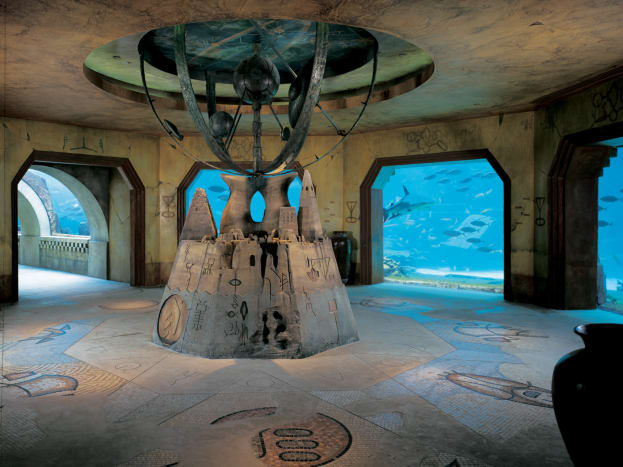
1 / 2
Tell us about the importance of the birth of a smalltooth sawfish at Atlantis.
Atlantis is the FIRST (and still only) marine habitat in the world to have had a successful birth of the critically endangered smalltooth sawfish, the most endangered marine fish in the world. There is no other shark, ray or marine fish that is at a higher threat level for extinction than the sawfish. Our marine life team conducts important research on this species and it continues to be a main priority of ours to help protect this species within The Bahamas and surrounding seas.
Researchers believe that there may only be as few as 10 mature female sawfish left in the breeding population that is established on the West side of Andros. In early 2019, Atlantis hosted a Sawfish Workshop and a group of Biologists from the US, Cuba and Bahamas (including those from Shark Advocates International, Havenworth Coastal Conservation, Florida State University, SeaLife Law, CubaMar, Bahamas National Trust) met on-property to discuss the smalltooth sawfish populations in the Caribbean, the work that is currently going on with sawfish protection and public education and what the next steps are that are needed to pass legislation to specifically protect sawfish in The Bahamas. Our Atlantis Blue Project foundation helps continue to fund this research and allows us to continue to support key programming and efforts, like this collaboration among biologists from all over.
How many animals are housed in the open-air Marine Habitat?
Atlantis’ large open-air Marine Habitat, there’s over 50,000 marine animals from over 250 species! This is a 24/7 + 365 year a day job – we care beyond for our animals and are dedicated to research efforts and programs that are impactful and educational.
Tell us more about your rehab facilities for the animals.
When Dave took the SI Swimsuit team around, it was to showcase the behind-the-scenes of what the Atlantis Marine Team does on a daily basis, 365 days a year, to care for the animals. It’s officially known as Atlantis, Paradise Island’s Fish Hospital. The Fish Hospital functions as a Quarantine area for newly acquired fish, a hospital for injured, sick or rehabilitated animals and a nursery for newborn animals that need time to grow before being released back into the manmade habitat or back into the wild population.
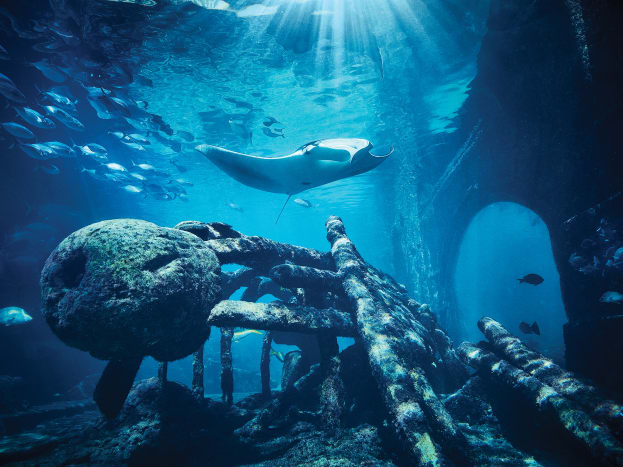
1 / 2
How much sea water is used throughout the facilities?
Sixty million gallons of sea water are circulated into the lagoons and sanctuaries daily.
What do the fish eat?
Our fish and marine animals are fed restaurant quality seafood (we have three fish kitchens on-property) – yes, the quality of what you’d find in top restaurants!
Tell us more about the different lagoons on property.
Within Predator Lagoon is an underwater acrylic viewing tunnel where guests come tooth-to-tooth with barracuda and several shark species. The winding Ruins Lagoon wanders through The Royal and provides astonishing views of these unique creatures of the sea. Seagrapes Lagoon introduces guests to 500,000-gallon habitat of exotic reef fish and gentle rays, a kaleidoscope effect of color.
The resort also offers 1,150 feet of waterfalls, underground grottos for wildlife viewing and a 100-foot suspension bridge for an aerial view of the lagoons. Daily fish feedings in the lagoons provide a hands-on way for guests to observe, learn, and interact with sea life. The myth of Atlantis truly comes alive in The Dig, a maze of underground passageways and tunnels offering underwater vistas into the boulevards and streets of the ruins of the lost city. Along the way are laboratories of the ancient Atlanteans, inventions of electricity, flying machines and submarines, and endless opportunities to explore a highly imaginative recreation of a mysterious underwater world, complete with an entire hieroglyphic language to decipher.
The Atlantis Blue Project Foundation (ABPF) is the resort’s private non-profit 501(c)3 organization, dedicated to saving marine species and their extraordinary habitats throughout The Bahamas and surrounding Caribbean seas. It accomplishes these goals by funding scientific research, conservation and education programs, and through community outreach efforts. Specific projects involve coral reef restoration, marine animal rehabilitation and release, sea turtle conservation and nest protection, marine preserve establishment, marine mammal stranding response, and manatee health assessments. A PORTION OF THE COST OF ALL GUEST MARINE INTERACTION EXPERIENCES GOES BACK TO THE ABPF.
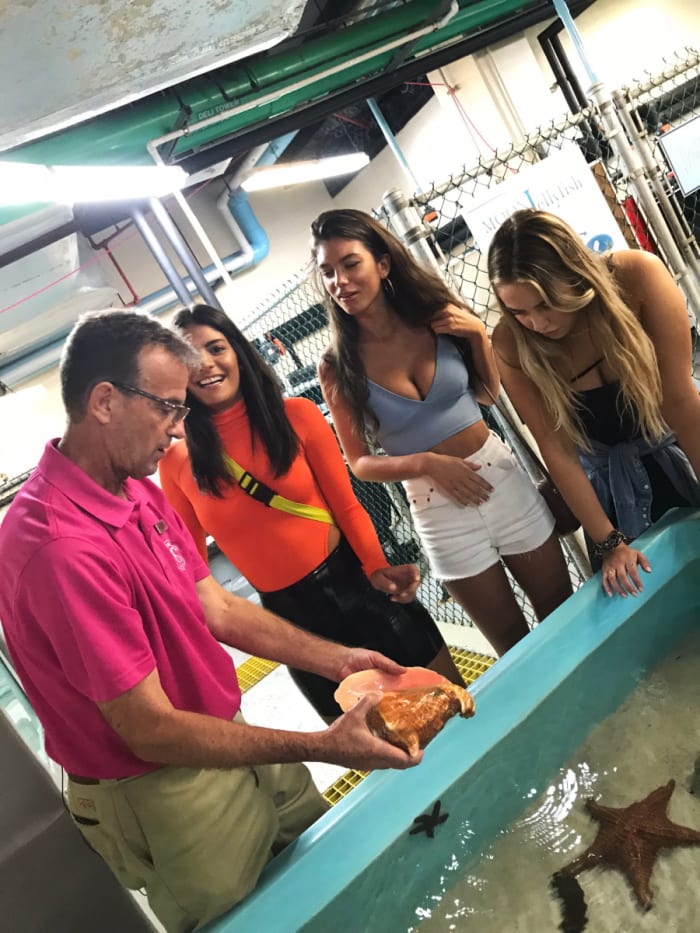
Kelsey Hendrix
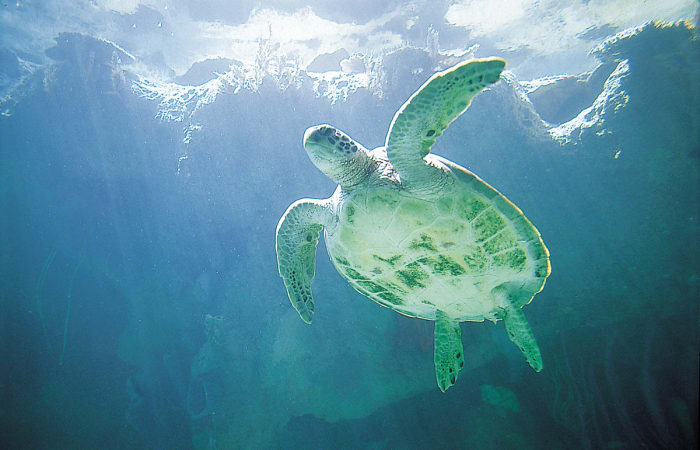
Courtesy of The Cove
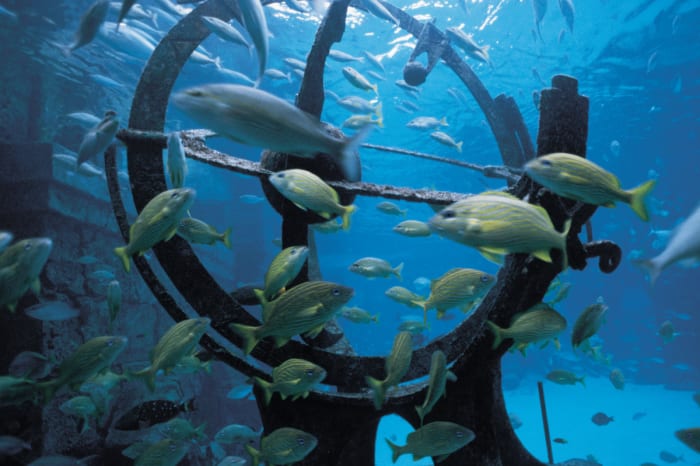
Courtesy of The Cove
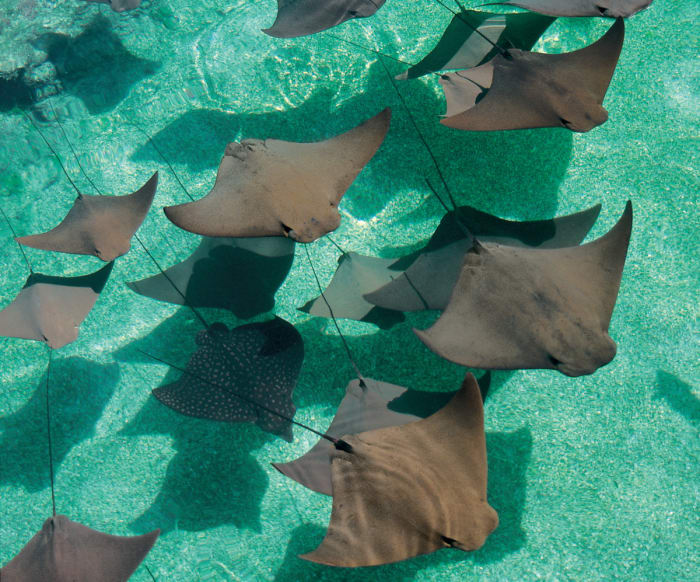
Courtesy of The Cove
